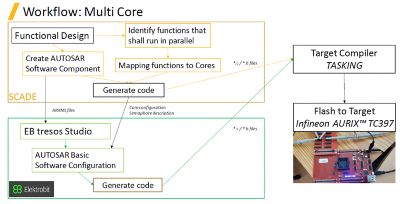-
-
Accédez au logiciel étudiant gratuit
Ansys donne les moyens à la prochaine génération d'ingénieurs
Les étudiants ont accès gratuitement à un logiciel de simulation de classe mondiale.
-
Connectez-vous avec Ansys maintenant !
Concevez votre avenir
Connectez-vous à Ansys pour découvrir comment la simulation peut alimenter votre prochaine percée.
Pays et régions
Espace client
Support
Communautés partenaires
Contacter le service commercial
Pour les États-Unis et le Canada
S'inscrire
Essais gratuits
Produits & Services
Apprendre
À propos d'Ansys
Back
Produits & Services
Back
Apprendre
Ansys donne les moyens à la prochaine génération d'ingénieurs
Les étudiants ont accès gratuitement à un logiciel de simulation de classe mondiale.
Back
À propos d'Ansys
Concevez votre avenir
Connectez-vous à Ansys pour découvrir comment la simulation peut alimenter votre prochaine percée.
Espace client
Support
Communautés partenaires
Contacter le service commercial
Pour les États-Unis et le Canada
S'inscrire
Essais gratuits
ANSYS BLOG
May 5, 2022
Harnessing Multicores for Faster Validation and Compliance
As electric vehicle (EV) designs grow in complexity, embedded software engineers are challenged to build in higher levels of performance, ensure safe operation under every possible operating condition, and comply with the rigorous standards of AUTOSAR — the AUTomotive Open System Architecture. Created to standardize the functionality of automotive embedded software, AUTOSAR specifies coding guidelines and communication protocols, ensuring that components within a vehicle work together, safely.
Engineers must undertake sophisticated development and safety verification tasks aligned with these standards, while still meeting ambitious market launch targets. While advanced solutions like Ansys SCADE automate software code generation, processing times have traditionally been an obstacle due to the large computational problems involved. Today’s multicore environments offer a potential solution.
Instead of relying on a single-core processor, these high-speed computing environments feature clusters of microprocessors that deliver greater power and speed by distributing tasks across the entire processing array. Multicore environments deliver significantly faster processing times and support shorter development cycles, but the engineers designing mission-critical embedded software for automotive applications must leverage them carefully. Essential safety verification tasks must be flawlessly distributed and synchronized across multiple cores to ensure correct safety analysis and AUTOSAR compliance.
With an emphasis on safety analysis, and many complex issues to consider in generating and verifying embedded software code, automotive engineering teams must also gain expertise in leveraging multicore environments. This is a challenge given that the level of complexity can’t be managed by manual processes, human cognition, or consumer-grade tools like Excel spreadsheets.
Ansys and Elektrobit: Fast-Tracking AUTOSAR Compliance
Ansys and Elektrobit — two leaders in supporting automotive software development — have created a tightly controlled, automated process for generating and verifying AUTOSAR-compliant embedded software code via powerful multicore environments. SCADE’s model-based software development suite is purpose-built for fast code generation, while Elektrobit’s tresos Safety operating system is designed to ensure a standard software stack that’s fully compliant with AUTOSAR standards. Together, these integrated solutions manage the end-to-end process of embedded software development, including the complexities of distributing computing tasks across a multicore processing array, without risk to analytic rigor or product confidence.
Few components are as essential to the safe operation of an EV as the battery management system (BMS), making it an ideal example of how AUTOSAR-compliant code generation can be accelerated and streamlined via the combined Ansys-Elektrobit toolkit. The BMS acts as a control center that balances electrical inputs and outputs, monitors conditions, senses problems and sends alerts when the unexpected occurs. In a worst-case scenario, the BMS is responsible for physically disconnecting and shutting down the battery.
Reducing Processing Time by 60%
In creating a test case for a typical BMS design, the Ansys-Elektrobit team found that a single processing core would result in a run time of 4.64 milliseconds — while the same computation could be completed in a multicore environment in just 1.9 milliseconds. Considering the enormous workload of software development teams, this 60% reduction in processing time can translate to much faster market launches and a meaningful competitive advantage.
The Ansys-Elektrobit development and verification process for generating and verifying BMS control code includes six steps:
- Ansys SCADE models the functional design of the BMS, ensuring its safe operation as part of the overall EV product system.
- SCADE adds AUTOSAR compliance requirements, and initial software code is automatically generated.
- Verification tasks are mapped to specific cores in the multicore environment, so the computing array is used strategically, and safety analysis is not compromised.
- In a secure handoff, Elektrobit imports the initial code as an ARXML file that describes the software architecture.
- EB tresos Safety applies the AUTOSAR Classic Platform to configure the software architecture in a way that ensures AUTOSAR compliance and, again, maps specific tasks to specific processing cores.
- Final embedded software code is generated for the BMS, which combines function, safety, and regulatory compliance.

A Specialized Solution
The job of generating and verifying embedded software code was complex enough, but the potential to use multicore environments brings new challenges. The partnership between Ansys and Elektrobit aims to address these challenges by automating the creation of robust, fail-safe system-level architectures — and their underlying software controls — while also strategically distributing tasks across multicore processors in the most optimal, precise way. Manual methods and non-specialized tools simply cannot deliver this level of speed, accuracy, and reliability.
By using the Ansys-Elektrobit process, embedded software development teams can ensure there are no surprises or unwanted consequences as software code is generated and verified. Together, Ansys and Elektrobit optimize the synchronization and sequencing of tasks to produce verified software code — and meet stringent AUTOSAR standards at the lowest possible investment of time, costs, and computing resources.
Clear your calendar on October 18 and 19 for the Digital Safety Conference 2022 to listen to the industry leaders vision and spark discussions around systems engineering, safety, embedded software, and cyber security!